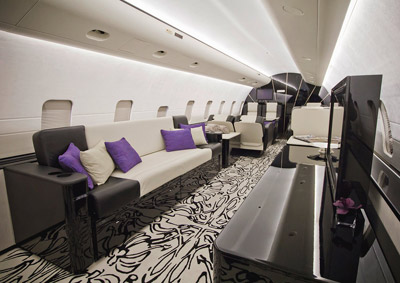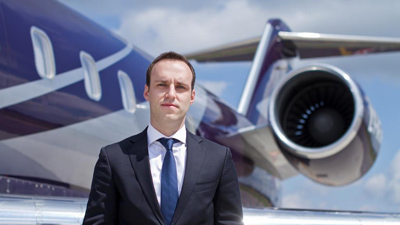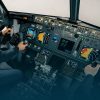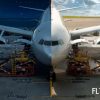 According to Forbes, currently there are 1 741 members of the ultra-wealthy club around the world. Moreover, analysts at Global Retail Solutions Group forecast the number of luxury consumers globally to reach 400 million by 2020. Needless to say, it is they who, according to Bombardier, are expected to drive the number of business aircraft purchases to 22 650 by 2023. In addition, seeing a business jet more than just a means for transportation, the new owners, especially those from the emerging markets, are driving the demand for unique interior refurbishments as well. However, while the urge for unique in the segment is understandable, the real challenge usually comes after the actual design work is done.
According to Forbes, currently there are 1 741 members of the ultra-wealthy club around the world. Moreover, analysts at Global Retail Solutions Group forecast the number of luxury consumers globally to reach 400 million by 2020. Needless to say, it is they who, according to Bombardier, are expected to drive the number of business aircraft purchases to 22 650 by 2023. In addition, seeing a business jet more than just a means for transportation, the new owners, especially those from the emerging markets, are driving the demand for unique interior refurbishments as well. However, while the urge for unique in the segment is understandable, the real challenge usually comes after the actual design work is done.
Reacting to the ever-growing demand for more cost-efficient aircraft, Airbus recently announced plans to offer clients a 3-5-3 cabin configuration on its Airbus A380, creating rows with 11 seats on the largest commercial jet on the planet. In the meantime, in the world of private travel many “new-born” jet owners seem to be moving closer and closer to having a truly home-like experience in their machines.
“With the luxury market heating up, a lot of what was predominantly seen in the West is now permeating to the emerging markets. For instance, as the economic powers shifted their base towards the east, China emerged as the new market for luxury brands to expand their market after most avenues in the west had either slowed down or been saturated. What this translated into was a considerable amount of spending on luxurious products by the Chinese, such as the $88 000 Korean anti-aging treatment at the Ritz Carlton, Seoul, or even the purchase of a private island by one Chinese millionaire,” comments Vitalij Kapitonov, the CEO of KlasJet. “Naturally, in such a scenario, buying a private jet and making it truly unique isn’t something impossible. In fact, it was recently revealed that there are quite a few people in the emerging markets, who spend considerable sums of money to redo their jets at regular intervals.”
As sales of private jets continue to grow, many international companies (such as Talcao Aviation, Aeria Luxury Interiors, Delta Interior Design), as well as the local ones are busy meeting the demands from private jet owners to customize their jets. Needless to say, refurbishing a plane comes at steep prices. For example, it may cost more than $30 000 to do as little as install a new carpet for a large-cabin in a Gulfstream G550. Moreover, installing entertainment systems and other elements like selection of rare fabrics for the upholstery could push the price even higher than what it is.
“Although most private jet owners are new to owning an aircraft, design and quality are both important elements for them. Many customers of design companies do not change  the engine, power generators and avionics of a jet, but they tend to redecorate the interior every three years. Many clients use their aircraft for doing business, so the jet needs to reflect who they are and the image they wish to project to the world. In the meantime, although these kinds of investments truly make an aircraft unique, the expenditure on private jets does not end with purchase, design and equipment. The costs continue onwards with aircraft maintenance, service and other expenses,” explains Vitalij Kapitonov, the CEO of KlasJet.
the engine, power generators and avionics of a jet, but they tend to redecorate the interior every three years. Many clients use their aircraft for doing business, so the jet needs to reflect who they are and the image they wish to project to the world. In the meantime, although these kinds of investments truly make an aircraft unique, the expenditure on private jets does not end with purchase, design and equipment. The costs continue onwards with aircraft maintenance, service and other expenses,” explains Vitalij Kapitonov, the CEO of KlasJet.
According to General Aviation Services, 350 to 400 hours of flight time per year should usually justify full ownership of a private jet. Conversely, Business Jet Traveler’s Reader’s Choice Survey unveils that the majority (58, 9%) of frequent flyers only flies 100 or less hours a year. In addition, crew salaries, required training costs, scheduled and unscheduled maintenance, hangar rent, insurance, avionics software updates, and many other expenses including taking care of the luxurious interiors must be paid to keep the aircraft ready to fly when you need it. Basically, this means most of the jet owners are constantly experiencing losses.
“We observe a great deal of owners losing money over untapped aircraft and this situation is extremely unpleasant. People invest millions, sometimes billions to make their flying home exclusive and unique; however, the potential of such an aircraft is literally wasted if a plane is not used constantly. As the cost of managing your own aircraft can vary between $700 000 to $4 million per year, putting this job into the hands of a third party provider can be an answer to the issue, as the customer would be protected from unanticipated losses while the provider is enabled to make an honest profit to maintain the upwards growth,” concludes Vitalij Kapitonov, the CEO of KlasJet.





